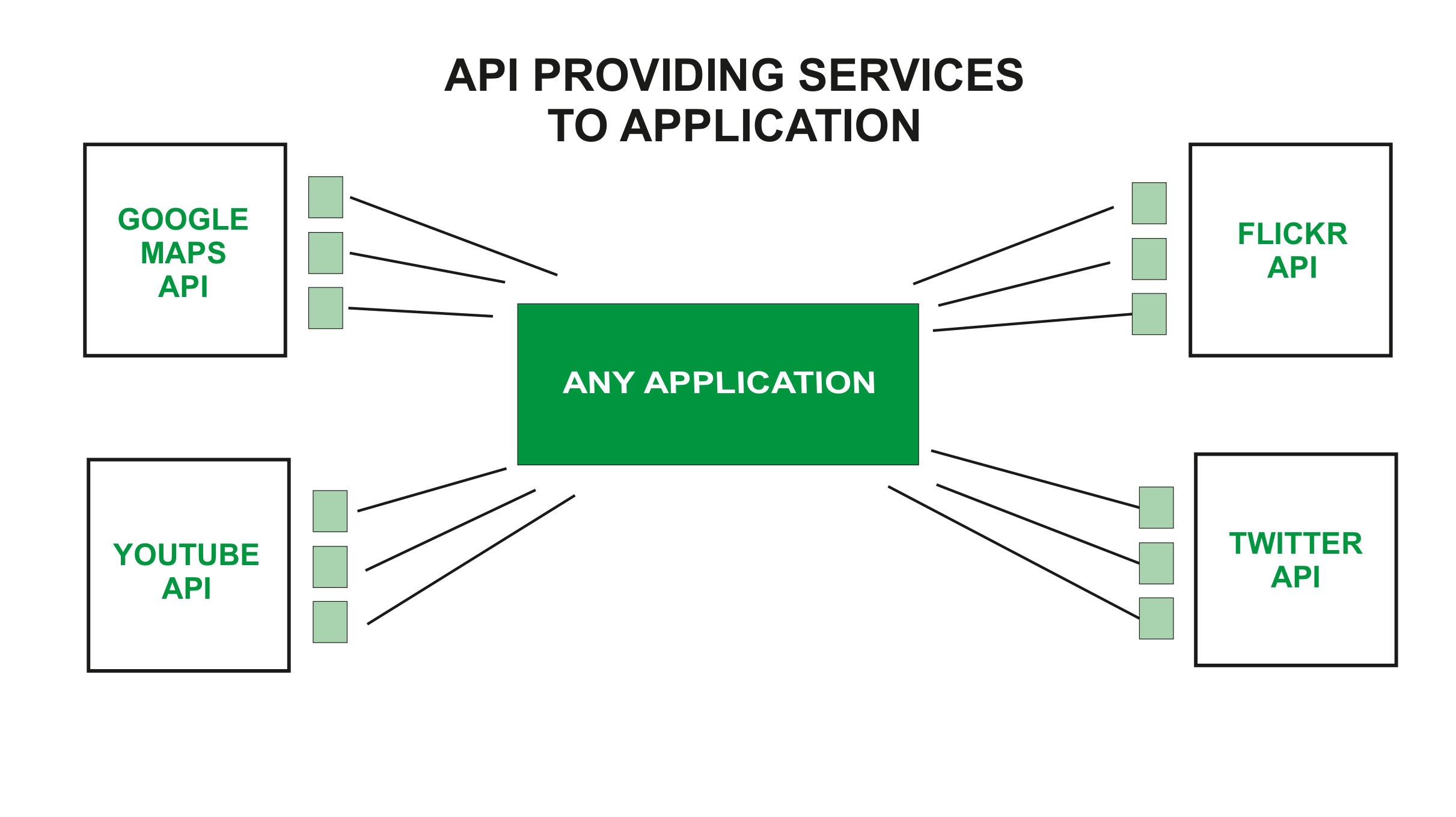What is Web API and why we use it ?
Last Updated :
31 May, 2020
API stands for Application Programming Interface. API is actually some kind of interface which is having a set of functions. These set of functions will allow programmers to acquire some specific features or the data of an application.
Web API is an API as the name suggests, it can be accessed over the web using the HTTP protocol. It is a framework that helps you to create and develop HTTP based RESTFUL services. The web API can be developed by using different technologies such as java, ASP.NET, etc. Web API is used in either a web server or a web browser. Basically Web API is a web development concept. It is limited to Web Application’s client-side and also it does not include a web server or web browser details. If an application is to be used on a distributed system and to provide services on different devices like laptops, mobiles, etc then web API services are used. Web API is the enhanced form of the web application.
ASP.NET Web API: ASP.NET stands for Active Server Pages.NET. It is mostly used for creating web pages and web technologies. It is considered a very important tool for developers to build dynamic web pages using languages like C# and Visual Basic. ASP.NET Web API is a framework that helps you to build services by making it easy to reach a wide range of clients including browsers, mobiles, tablets, etc. With the help of ASP.NET, you can use the same framework and same patterns for creating web pages and services both.
Where to use Web API?
- Web APIs are very useful in implementation of RESTFUL web services using .NET framework.
- Web API helps in enabling the development of HTTP services to reach out to client entities like browser, devices or tablets.
- ASP.NET Web API can be used with MVC for any type of application.
- A web API can help you develop ASP.NET application via AJAX.
- Hence, web API makes it easier for the developers to build an ASP.NET application that is compatible with any browser and almost any device.
Why to Choose Web API?
- A Web API services are preferable over other services to use with a native application that does not support SOAP but require web services.
- For creating resource-oriented services, the web API services are the best to choose. By using HTTP or restful service, these services are established.
- If you want good performance and fast development of services, the web API services are very helpful.
- For developing light weighted and maintainable web services, web API services are really helpful to develop that service. It supports any text pattern like JSON, XML etc.
- The devices that have tight bandwidth or having a limitation in bandwidth, then the Web API services are the best for those devices.
How to use Web API? Web API receives requests from different types of client devices like mobile, laptop, etc, and then sends those requests to the webserver to process those requests and returns the desired output to the client. Web API is a System to System interaction, in which the data or information from one system can be accessed by another system, after the completion of execution the resultant data or we can say as output is shown to the viewer.
API provides data to its programmers which is made available to outside users. When programmers decide to make some of their data available to the public, they “expose endpoints, ” meaning they publish a portion of the language they have used to build their program. Other programmers can then extract the data from the application by building URLs or using HTTP clients to request data from those endpoints.
Server Side: A server-side web API is a programmatic interface. It consists of one or more publicly exposed endpoints. It defines a request-response message system. Mashup is a web application that is a server-side API that combines several server-side APIs. Webhook is a server-side API that takes input as a uniform resource identifier.
Client Side: Client Side web APIs target standardized JavaScript bindings. Google created their native client architecture designed to replace native plug-ins with secure native sandboxed extensions and applications.
Steps to use Web API:
- Most APIs require an API key. Once you find an API you want to play with, look in the documentation for access requirements. Most APIs will ask you to complete an identity verification, like signing in with your Google account. You’ll get a unique string of letters and numbers to use when accessing the API.
- The easiest way to start using an API is by finding an HTTP client online, like REST-Client, Postman, or Paw. These ready-made tools help you structure your requests to access existing APIs with the API key you received. You’ll still need to know some of the syntaxes from the documentation, but there is very little coding knowledge required.
- The next best way to pull data from an API is by building a URL from existing API documentation.
Popular API Examples:
- Google Maps API’s: Google Maps APIs allows developers to use Google Maps on Webpages using a JavaScript or Flash interface.
- YouTube API’s: Google’s API lets developers integrate YouTube and functionality into websites or applications. YouTube APIs include the YouTube analytics API, YouTube Data API, YouTube live streaming API, YouTube Player APIs and others.
- The Flickr APIs: It is used by developers to access the Flick photo sharing community data.
- Twitter APIs: Twitter offers two APIs, the REST API allows developers to access core Twitter data and the search API provides methods for developers to interact with twitter search and trends data.

Share your thoughts in the comments
Please Login to comment...